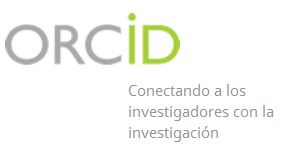¿Cómo medir la eficiencia relativa de las instituciones de salud cubanas?
Keywords:
eficiencia relativa, análisis envolvente de datos, instituciones, servicios, saludAbstract
Introducción. El estudio de eficiencia en unidades de salud contribuye a diseñar estrategias que permitan alcanzar mejores resultados con los recursos disponibles.
Objetivo. Describir un algoritmo desarrollado para instituciones cubanas que facilita la medición de la eficiencia en instituciones sanitarias. Método. El algoritmo se construyó sobe la base de la revisión bibliográfica y la experiencia de los autores.
Resultados. Se definieron 15 operaciones que combinaron técnicas culitativas y cuantitativas. Se seleccionó el Análisis Envolvente de Datos como técnica para medir la eficiencia.
Conclusiones. El algoritmo desarrollado permite afrontar el estudio de la eficiencia relativa de unidades prestadores de servicio de salud en diferentes entornos. La realización de este tipo de medición generará evidencias que respaldarán las medidas correctivas necesarias para elevar la eficiencia de las instituciones.
Downloads
References
2. Madueño-ávila M, Sanabria-Montañes C. Estudio de oferta de los servicios de salud en el Perú y el análisis de brechas (2003-2020).Agency for Internacional Development (USAID), 2003, Bethesda, Maryland, U.S.
3. Farrell M. J. The measurement of Productive Efficiency. Journal of the Royal Statistical Society. Series A (General). 1957; 120 (3):253-90
4. Charnes A., Cooper W.W. and Rhodes E. Measuring the efficiency of decision making units. European journal of operations research 1978; 2: 429-44.
5. David B E, Tandon A,Murray J L, Jeremy AL. Comparative efficiency of national health systems: cross national econometric analysis. BMJ 2001;323:307-10
6. Smith PC and Street A. Measuring the efficiency of public services: the limits of analysis. J. R. Statist. Soc. A 2005;168: 401 -417
7. J acobs R, Smith PC and Street A. Measuring efficiency in health care. Analytic techniques and health policy. United Kindom: Cambridge University Press;2006:1-13
8. Object management group, INC.(OMG). (2003):Unified Modeling Language Specification, USA,Masachussets
9. Donabedian A. Approaches to assessment: What to assess in evaluating the quality of medical care? Milbank Mem Fund Quart. 1986; 44:167-70
10. Keeney S, Hasson F, McKenna H. Consulting the oracle: ten lessons from using the Delphi technique in nursing research .J Adv Nurs. 2006; 53(2):205-12
11. Astigarraga E. El método Delphi. Universidad de Deusto; 2005. Disponible en: http://www.codesyntax.com/prospectiva/metodod delphi.pdf
12. Martín Martín y Puerto López del Amo González M. La medida de la eficiencia en las organizaciones sanitarias. Presupuesto y Gasto Público. 2007;49: 139-161
13. Avkiran NK. Productivity analysis in the service sector with Data Envelopment Analysis. /font> Second Edition. Australia: University of Queesland, 2002:27-36
14. Renner A, Kirigia J.M., Zere E.A., Barry S.P., Kirigia D.G., Kamara Cand Muthuri L.H.K. Technical efficiency of peripheral health units in Pujehun district of Sierra Leone: a DEA application. BMC Health Services Research. 2005; 5:77
15.Banker RD, Charners A, Cooper WW. Some models for estimating technical and scale inefficiencies in Data Envelopment Analysis. Management Science. 1984;30 (9):1078-92
Downloads
Published
How to Cite
Issue
Section
License
Those authors who have published with this journal, accept the following terms:
a. The authors will keep their copyright and guarantee the magazine the right of first publication of their work, which will be simultaneously subject to the Creative Commons Attribution License that allows third parties to share the work as long as the author and first publication of this magazine are indicated.
b. The authors may adopt other non-exclusive license agreements for the distribution of the published version of the work (e.g., deposit it in an institutional telematic archive or publish it in a monographic volume) as long as the initial publication in this journal is indicated.
c. Authors are allowed and recommended to disseminate their work through the Internet (e.g.: in institutional telematic archives or in their web page) before and during the submission process, which may produce interesting exchanges and increase the number of citations of the published work. (See The effect of open access).





